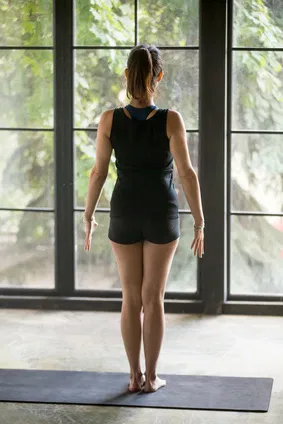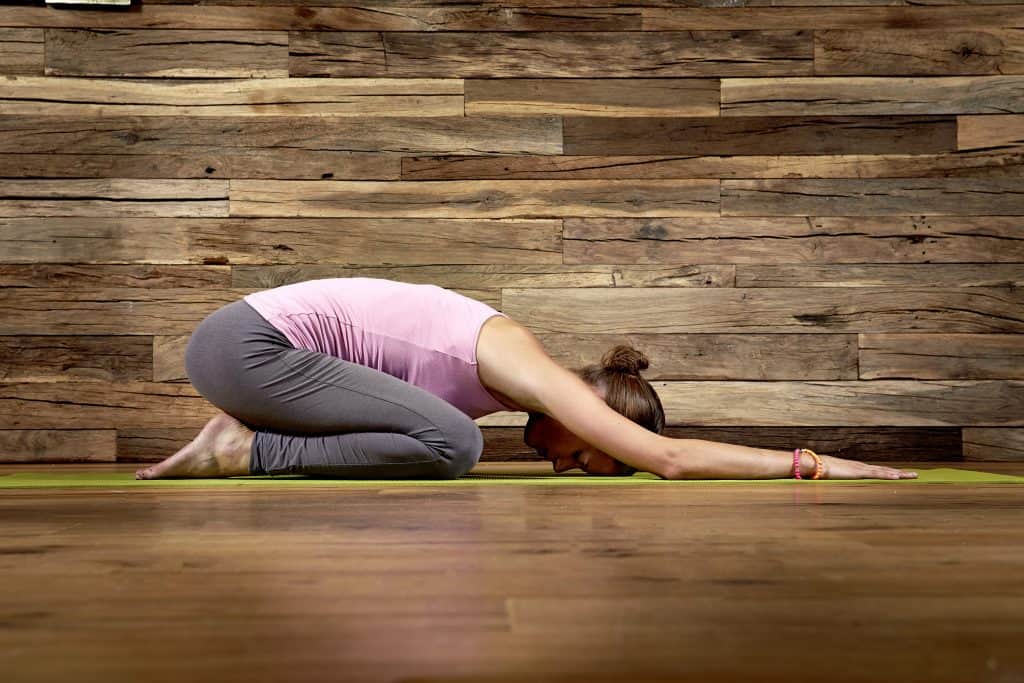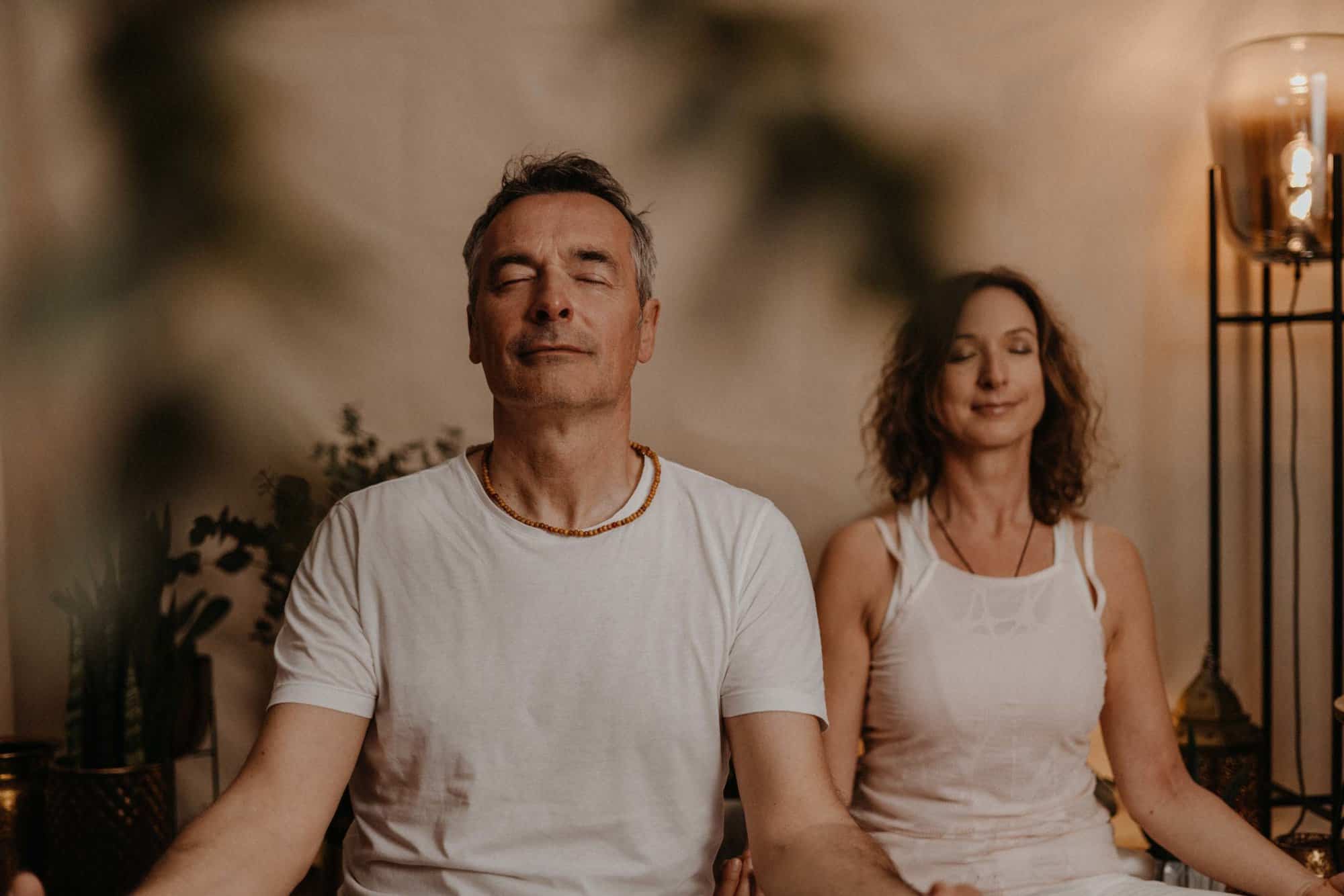Especially in the case of slipped discs, it is particularly important to stabilise and strengthen the back muscles again. Often the fear of the pain still haunts you even after a few months or years. Yoga can not only make your body stronger here, but also your mind. With the right asanas, you can reawaken your confidence in your own body!
Why yoga helps so well with intervertebral disc problems
If you have disc problems, lack of movement is often a big problem. Our intervertebral discs are special gelatinous compounds and are located between the vertebrae of our spine. They are basically there to cushion the individual vertebrae well. Every movement we make is cushioned by them. However, it becomes problematic when we don't move.
The less active we are, the more our intervertebral discs recede. They can even dissolve completely, causing the vertebrae to grow together. What you feel as this insane pain occurs, for example, because your intervertebral disc presses on the spinal nerves - exactly where the stimuli are transmitted.
So the recipe against pain is: exercise! However, not every type of sport is possible and does good. Ideally, you should strengthen your back and stretch your leg and hip muscles - with yoga you can achieve this in a gentle and soothing way! Yoga strengthens and stretches the entire muscular and ligamentous system - alternating tension and relaxation. The stress-reducing component of yoga also has a positive effect on the central nervous system. This makes it an ideal exercise option for people with a slipped disc.
Important tips for yoga after a slipped disc
If you decide to stop your back pain through yoga, then be sure to avoid the following:
- No fish position, headstand & shoulder stand!
- When bending forward, also bend the legs to relieve the lower back!
- No deep back bends!
- Do not make any jerky movements!
- No abdominal exercises that further compress the spine!
When you practise yoga in a group, you run the risk of drifting along and also trying asanas that are not yet good for you at the moment. However, by adapting your yoga practice to the needs of your back, you will learn over time to match your limits and possibilities very well - you will get to know your body better again and support it in its regeneration. Yoga also makes an excellent preventative measure for further incidents.
Yoga exercises for intervertebral disc problems
The extent to which exercises are good or not for your individual situation should always be clarified with a doctor beforehand. What you can almost always do, however, is to start with gentle and slow mini-movements. Careful circling or tilting of the pelvis is especially good for the lumbar region, and joint exercises also pay off. It starts with classic stretching movements such as the forward bend or the plough and continues with increasing movements. Here is a beneficial exercise example:
Exercise idea: Tadasana - the mountain pose
Stretch your back with this basic yoga pose. It improves your posture as it stretches the spine and increases your balance:

- Stand upright, close feet, balls and heels should touch lightly. Position the edges of the feet as parallel as possible. Lift toes off the floor, spread them and place them from the outside to the inside like a fan.
- Straighten up from the bottom to the top. Distribute weight evenly on both feet, heel and ball of foot. The inner arch of the foot should pull upwards. The edges of your feet press firmly into the floor.
- Your thighs automatically turn inwards very slightly, your legs are active.
- You prevent a hollow back by pulling your tailbone forward and down. Your pelvis shifts slightly forward, your buttocks are gently tightened, your belly button pulls inwards, towards the spine.
- Now roll your shoulders back - then let them fall loosely back down again. Make sure that your shoulder blades pull towards each other.
- Your arms drop down on your sides, palms facing your leg and not touching your body.
- Important: Your head is straight. There is a line between the back of your head, heel and buttocks. You can see this by positioning your chin parallel to the floor. Ideally, the top of your head should face the ceiling and your gaze should be straight ahead.
- Feel safe, then close your eyes. This will make the exercise harder, but you will get better balance. Take a few deep breaths and relax.
Other asanas would be Balasana - the child's pose, because it relieves the back. Other ideas are Setu Bandha Sarvangasana - the shoulder bridge, Supta Padangushthasana - the lying hand-foot posture, and Viparita Karani - the half candle. Another important tip: feel free to use aids to make it easier for you. Straps, blocks or cushions can support you in your postures and secure you better.
The right yoga exercises can help you to strengthen your back muscles again after a slipped disc, or even to prevent one. Bad postures in everyday life, too little or even the wrong movement can strain your intervertebral discs. Counteract this with yoga and feel freer and stronger!





